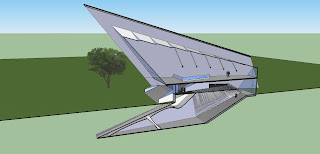Mash-up of 3 articles: http://ben-diggles.blogspot.com.au/2013/06/experiment-3-mashup-of-three-articles.html
This mash-up of 3 articles forms the theory of the whole school for architecture. In short, my theory explains that: "Eventually everything becomes obsolete" where in the world of architecture, this includes how one designs and learns.
18 Sketch Perspective: http://ben-diggles.blogspot.com.au/2013/05/experiment-2-1-point-and-2-point.html
36 Custom Textures
Inspired landscape (Cagayan Valley, Phillipines)
Section of the structural elements
Folly: This Folly is still on the Valley floor but is within the building as a water feature
Deans office/Elevator 2: This is wholly an elevator to an elevator showing a new kind of elevator, fitting to the structural design.
Library and elevator: This elevator follows the traditional elevator design that fits in with the whole library. There is also a research space only accessible for postgraduates through a separate elevator:
This school for architecture shows 2 main structural elements; the library/research building and the design/learning building. These 2 represent the historical and modern structures, which is then connected by the bridge, relating to the connected theory.
Gallery
Workshop space
Lecture Theatre
Studio Spaces
Skecthup and CRYengine Models (The CRYengine model is 'Experiment_3_Animation'): https://drive.google.com/folderview?id=0B7JC1Pg9L_hiVkhUdDBWT1lYQW8&usp=sharing
And just my flowgraphs used:
Sliding Door
Dean's office/elevator
Bridge




























































